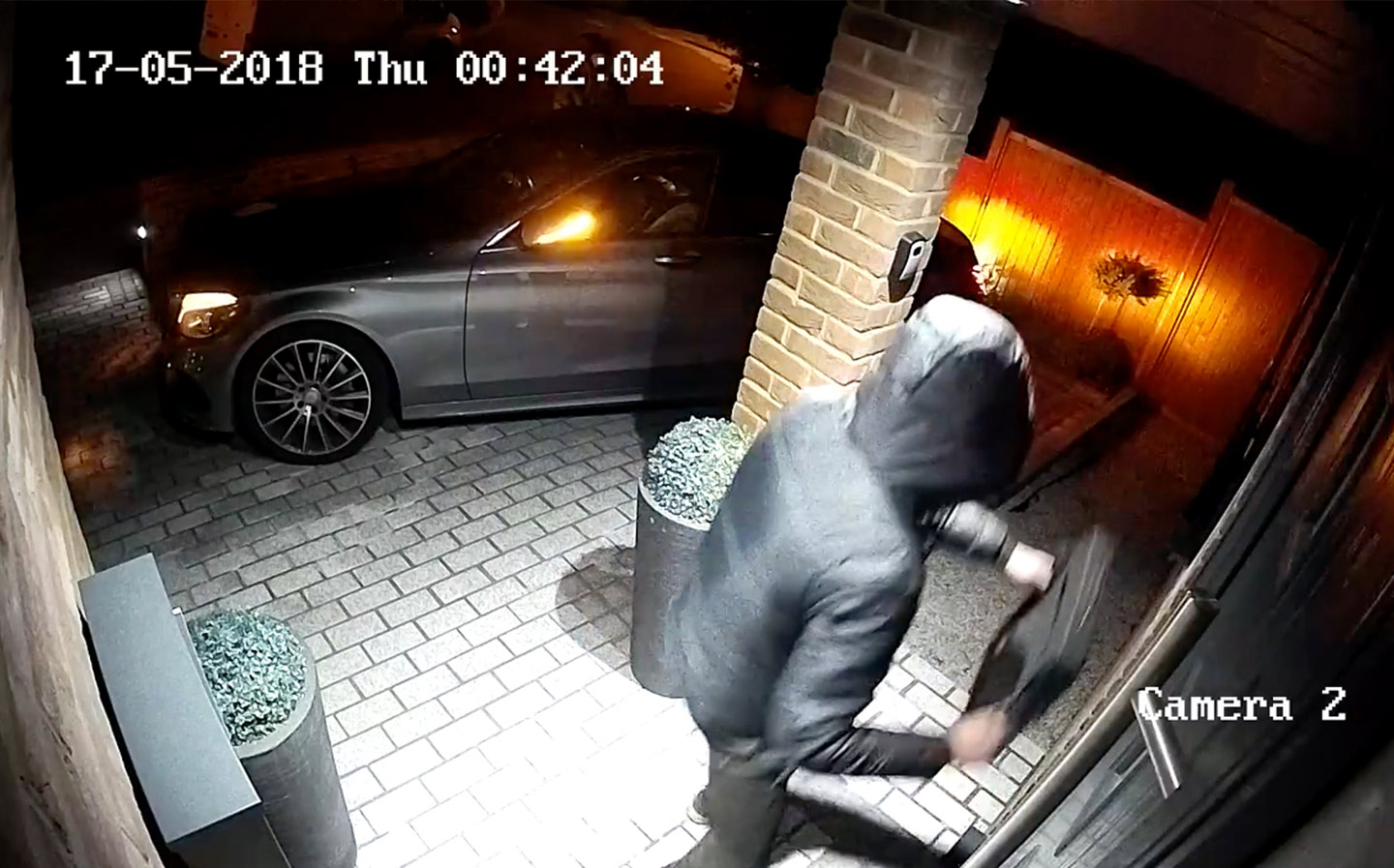Keyless cars twice as likely to be stolen as non-keyless models
Time to dust off the steering wheel lock?
Vehicles with keyless entry and start systems are twice as likely to be stolen as those without, according to new data released by the insurance company, Aviva.
Between August 2020 and August 2022, the firm noted that customers with keyless entry cars had significantly greater likelihood of making a theft claim than those of non-keyless cars.
Keyless entry theft — which can be remarkably simple for criminals with the correct knowledge and low-cost gadgets — now makes up the majority of all car thefts.
According to Home Office figures, 108,542 vehicles were stolen between April 2021 and March 2022 in England and Wales, the equivalent of 279 thefts each day and representing a 22% increase from the previous 12 months.
A look at the Home Office’s list of the top ten most commonly stolen vehicles in the UK in 2021 shows the popular Ford Fiesta come out on top, but in second place was the far less common Range Rover Sport. The likes of the BMW 3 Series, Mercedes E-class and Land Rover Discovery were also among the most stolen cars, underscoring the extent to which thieves are targeting high-end luxury vehicles with keyless entry systems.

In 2021, keyless entry theft accounted for 94% of all cars recovered by Tracker, the vehicle tracing firm said, with six out of ten of its most commonly stolen vehicles being from Land Rover.
Though higher-value vehicles are the ones most in demand by criminal enterprises, recent research by the insurer Direct Line shows that typically those actually stealing the cars only receive around 1.25% of the vehicle’s value.
Aviva’s data also shows that as keyless entry thefts have risen, so the use of mechanical anti-theft devices has fallen.
In the year ending March 2010, 29% of vehicles targeted by thieves used a device such as a steering lock. A decade later, this had fallen to 15%.
By comparison, electronic methods such as central locking, car alarms and tracking devices had increased over the same period.
Aviva’s analysis of crime data from the Office of National Statistics (ONS) shows that more than three quarters (76%) of vehicle-related thefts (i.e., vehicle break-ins as well as cars being stolen) occurred during the hours of darkness.
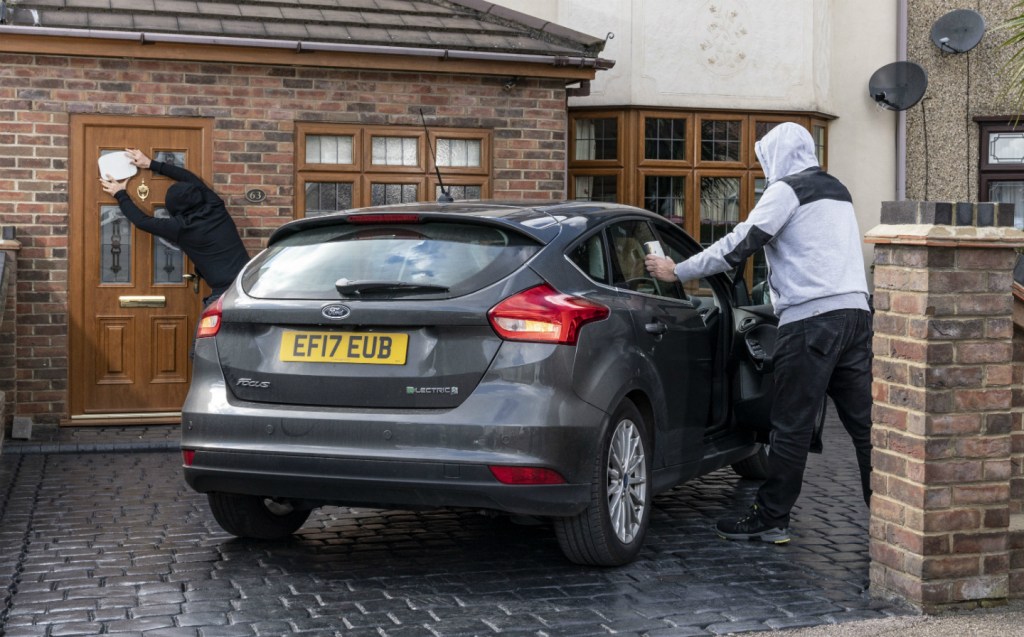
However, the proportion of vehicles taken in the dark fell between 2019 and 2020, according to Aviva, with 65% of vehicles stolen during darkness and dawn/dusk in the year ending March 2020, compared with 77% in the previous year.
This may be indicative of the fact that keyless-entry thefts can be conducted in a far more innocuous-looking and subtle fashion than a theft involving the breaking of a window and ‘hot-wiring’ of a car.
Out of all the car thefts examined as part of Aviva’s study, some 73% took place outside the owners’ homes.
While the overall number of vehicle-related claims filed with Aviva increased by 13% over the past two years, it did emphasise that car thefts only made up “a very small proportion” of those claims.
Alec Reeder from Aviva General Insurance said: “While vehicle security has developed and improved in many ways, unfortunately criminal activity is evolving too. Over the past two years, we’ve found claims for stolen keyless vehicles are twice as likely as those for for non-keyless vehicles.
“While theft claims account for only a small proportion of our vehicle claims overall, we understand that a stolen car can be very distressing for owners. We’d encourage people to take extra precautions, particularly at this time of year, when thieves have the added advantage of reduced daylight.”
Driving.co.uk has a comprehensive guide on keyless car theft and the ways to prevent it, but Aviva highlighted a few tips:
- Store your key fob in a metal signal-blocking box or Faraday pouch to prevent the signal being hijacked by thieves. See examples here.
- Make sure your car is locked: listen out for the clunk of the locks and make sure you see your lights flash before assuming that the car is actually locked.
- Fit an old-fashioned steering lock to act both as a visual deterrent and to prevent thieves driving the car away if they do get inside. Here are some of the best steering wheel locks available.
- Using a tracking device is a good idea, especially if you’ve got a particularly valuable car. A tracker means that if your car does get stolen, it should be a lot easier to find.
- Think about where you park your car. A well-lit area is good; behind a locked gate is better; inside a garage is better still.
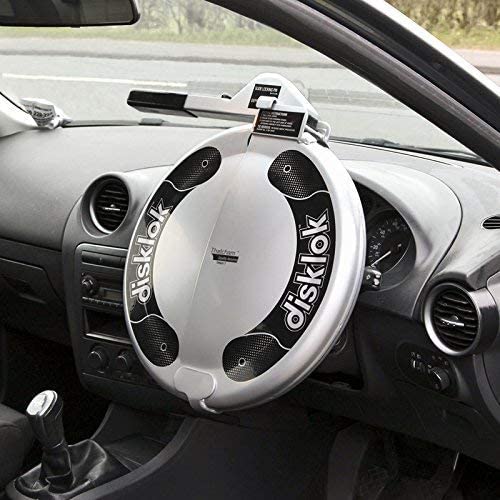
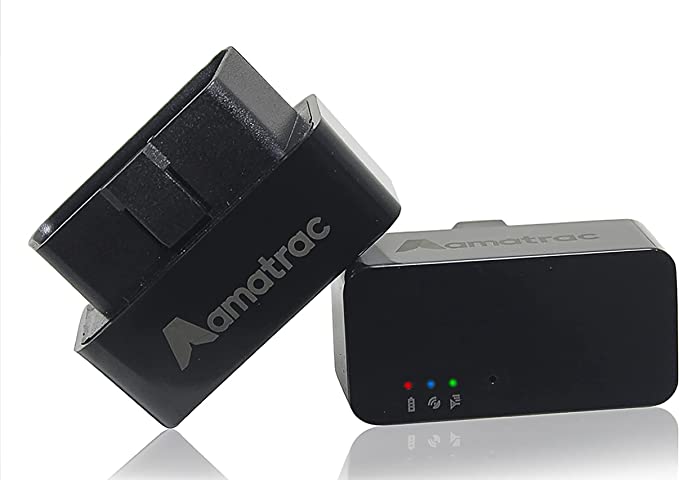
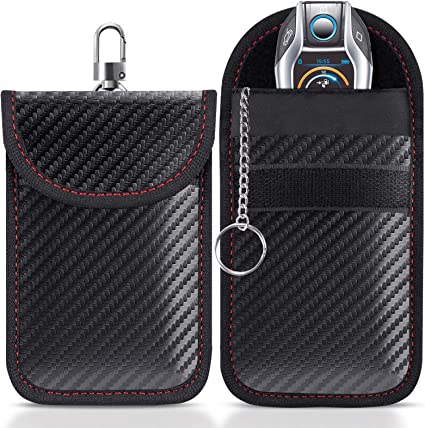
“Seemingly old-fashioned mechanical devices — such as a steering wheel or foot pedal lock — can be a useful visible deterrent, encouraging thieves to think twice,” Reeder said. “Cars really can be gone in 60 seconds, so it’s vital that motorists stay one step ahead of the criminals.”
How does keyless car theft work?
The most common form of keyless car theft involves signal relaying. Car key fobs emit a short-wave radio signal that carries just a few yards, but which allows the car to be opened, started and driven away when the fob is within range.
In stealing a car, thieves can use a wireless transmitter to pick up the signal from the key fob, boost it and relay that signal to another device (held by an accomplice) next to the target vehicle. This fooling the car into thinking that the key is within range and allows the criminals to get inside and start the vehicle. Once inside, a blank fob can be programmed to work with the car, allowing resale.
Another method involves signal jamming in which the command from the fob to lock the vehicle is blocked by a jamming device, giving a thief an open door.
Yet another involves close-range testing in which a thief will try their luck at opening a car door in the hope that the key fob has been left sufficiently close to the car (inside a hall door or within tent at a campsite, for example) that it will allow them to open the vehicle. They may not be able to drive away, but it could allow the chancer to snatch valuables from the cabin.
Related articles
- After reading about an increase in keyless car theft, you may also like to read how relay theft is affecting insurance here
- Here’s our guide on how to repair alloy wheel damage
- And if you have a diesel car, you may like to read our article on adblue
Latest articles
- Seven great automotive events to visit this summer, from F1 to art and champagne
- Watch new Porsche 911 GT3 smash Nürburgring record for manual cars
- Skoda Elroq 2025 review: Czech carmaker can’t seem to miss with its electric family cars
- Five best electric cars to buy in 2025
- Should I buy a diesel car in 2025?
- F1 2025 calendar and race reports: The new Formula One season as it happens
- Zeekr 7X AWD 2025 review: A fast, spacious and high tech premium SUV — but someone call the chassis chief
- Denza Z9GT 2025 review: Flawed but sleek 1,062bhp shooting brake from BYD’s luxury arm
- Extended test: 2024 Renault Scenic E-Tech review


